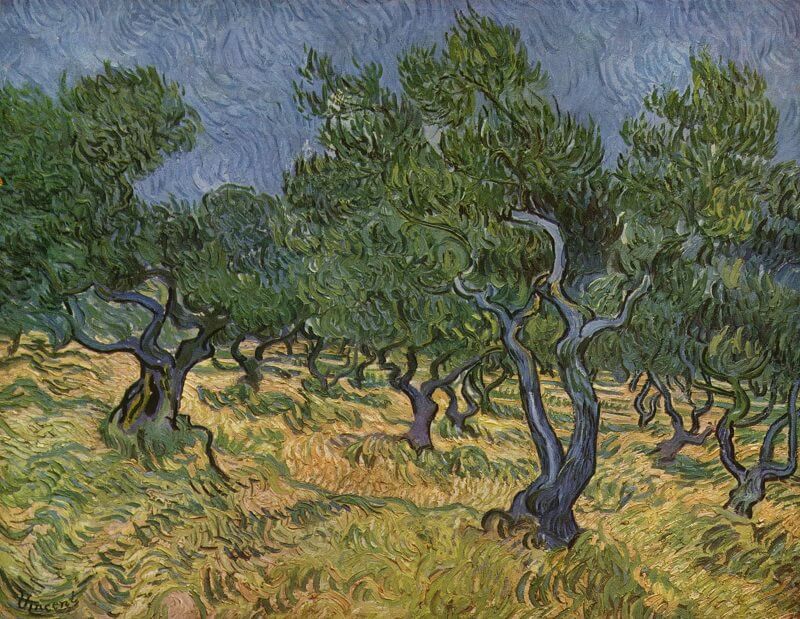Olive Trees, 1889 by Vincent Van Gogh

The asylum was situated in the countryside approximately 3 km (2 miles) outside the village of Saint-Remy. Surrounding the building, which had been built in the twelfth century to house a monastery, were acres of wheat fields, cypress trees, olive groves, and vineyards. It was a wild, rugged, and beautiful place, though it was also lonely and remote.
Van Gogh's style again evolved here, with his increasing use of great rhythmic brushstrokes and swirling tumultuous forms. He took the natural object, such as the gnarled old olive trees seen here, and stylized it through the swells and curves of his circles of paint. The expression in his brushstrokes and the actual application of the strokes were indicative of his agitated and nervous mind, while there is a great sense of urgency and a frisson of barely contained feeling that is evident through his pattern of the applied point. At the same time, his palette again becomes noticeably darker. He still favored vivid color, but the color was less pure and startling and was imbued with overall somber quality.




















